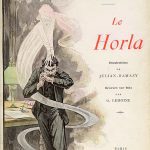
The declaration of war in 1914 signaled a major break in European cultural history, and a major break in the life and career of Robert Antoine Pinchon, who was mobilized on 5 August 1914 at Bernay. Pinchon was wounded in his right leg by a German mortar discharge during the First Battle of the Marne and was repatriated to a hospital in Saint-Céré. Once recovered, he was sent back to the front lines, but during fierce fighting in the village of Tahure on October 6, Pinchon was wounded, this time by shrapnel to the right arm.
Early in 1916, Pinchon was sent back to the front for the second time. After several unsuccessful offensive assaults, the Germans were able to gain control of the French coast near Damloup. Robert Antoine Pinchon became a prisoner of war and was evacuated to Gerichshain, Germany (east of Leipzig).
His father arranged for a painting of his to be shown at the 9th Salon des artistes rouennais (April–May 1917). Pinchon remained a prisoner in Germany from autumn 1916 until autumn 1918, but was able to create several pastels while in captivity. Meanwhile, works by Pinchon were shown again at the Galerie Legrip in Rouen.
During this difficult period, one of Pinchon’s paintings (Le coteau d’Amfreville, près Rouen) was exhibited at the Musée du Jeu de Paume in Paris, in a 1917 show dedicated to artists who had lost their lives in the war, prisoners of war, and those still in combat: Exposition des peintres aux Armées.
Escape From Prison
On a date that remains unknown, Pinchon was able to escape captivity. After passing through Switzerland, Italy, and a large section of France, he was able to reach his hometown of Rouen on 20 December 1918.
At the same time, an exhibit was underway at the Musée des Beaux-Arts de Rouen. Pinchon was represented with four paintings, along with Bonnard, Boudin, Camoin, Cross, Guillaumin, Lebourg, Luce, Matisse, Monet, Signacand Vuillard. Pinchon was listed as a prisoner of war in the catalogue.
Like many of those who survived the Great War, Pinchon was shocked, disillusioned and embittered by his experiences. He expressed the view that his four years of military service and captivity had “shattered” his career. For four years in a row, he had been accepted at the Salon d’Automne but been unable to fulfill his entries. Pinchon faced difficult challenges, but returned to painting what he loved most: the great outdoors. Source: Wikipedia.




